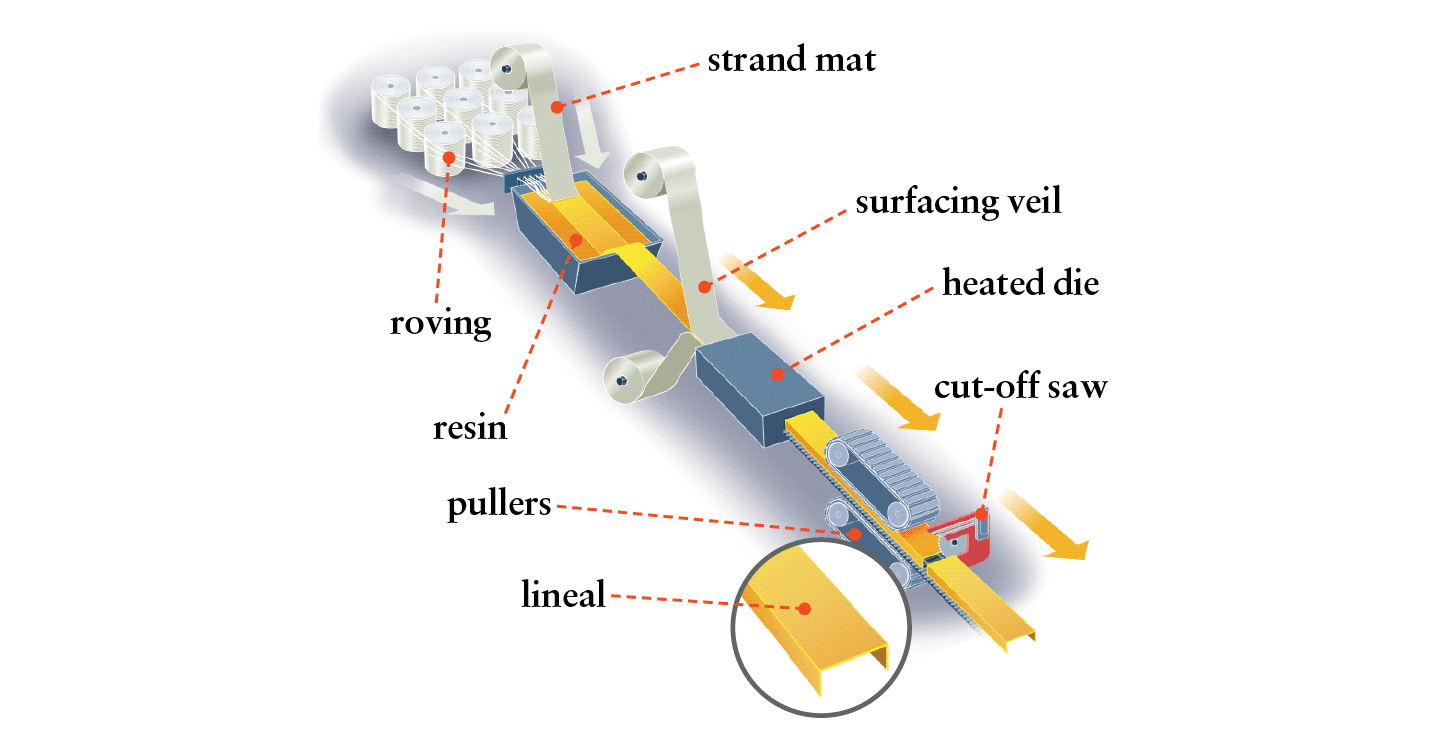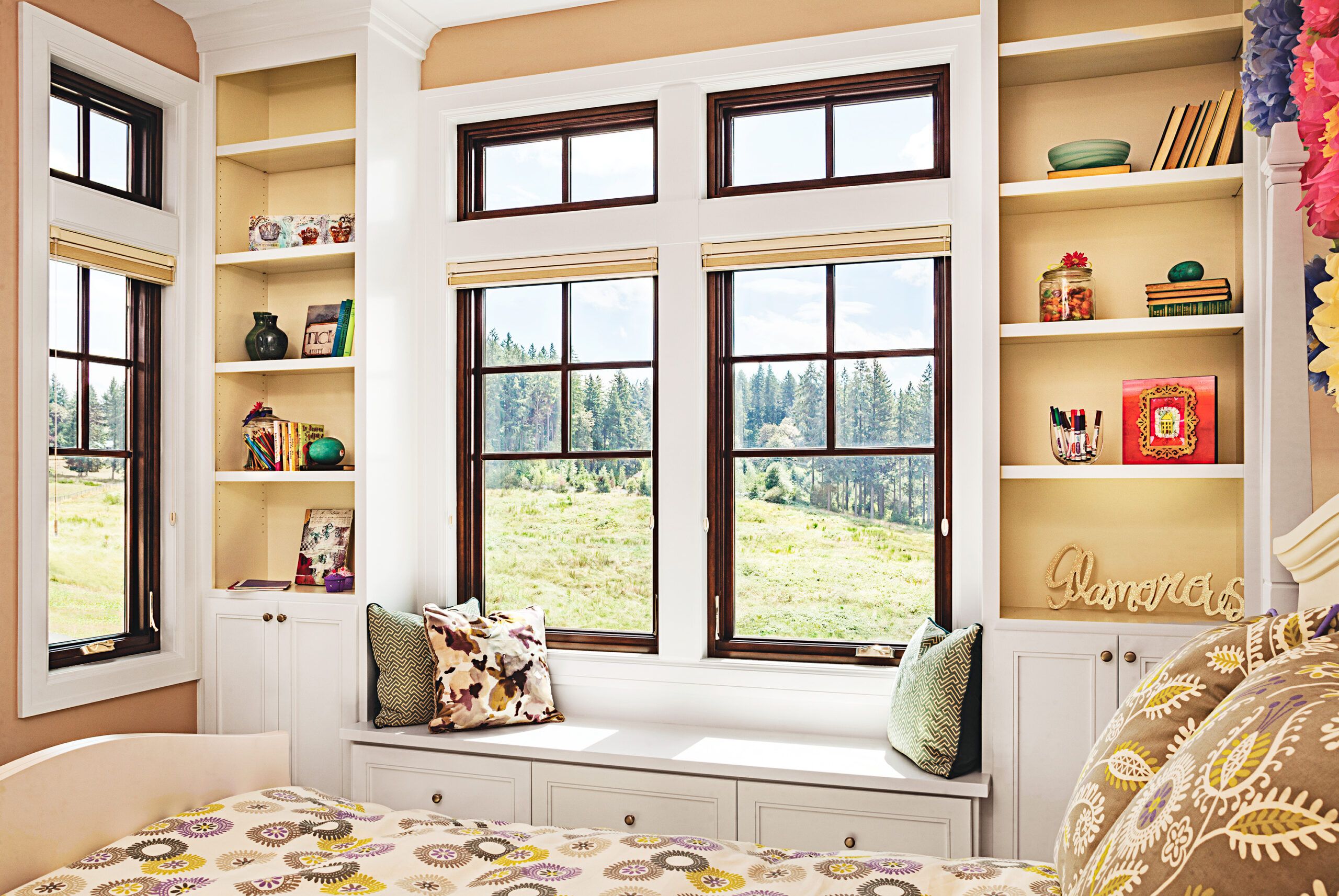Fiberglass windows are gaining popularity among homeowners seeking to upgrade their homes. These innovative windows offer a compelling combination of durability, energy efficiency, and low maintenance.
Our guide covers the benefits of fiberglass windows, their performance, and how they compare to other window materials. We’ll also explain their costs, design options, and best installation options for your home.
How Fiberglass Windows Are Made

Fiberglass windows start with glass fibers woven into a mat, then coated with resin to harden. The hardened material is cut, shaped into window frames, and later assembled into complete windows.
Meticulous crafting ensures a robust and durable final product. The fibers add strength, and the resin provides rigidity and resistance to environmental factors. Additional treatments often enhance energy efficiency, weather resistance, and overall longevity. The result is a window that combines sturdiness with aesthetic appeal.
Each step in the process involves careful monitoring to guarantee the windows meet stringent performance standards. Reviews include checking fiber alignment, resin coating consistency, and the precision of cuts and molds. Manufacturers deliver windows that excel in both form and function by upholding high standards during production.
Benefits of Fiberglass Windows

Fiberglass windows have significantly evolved in terms of availability and selection.”Fifteen years ago, fiberglass windows were available only in limited sizes, turned chalky from sun exposure, and came in just one color—white,” says Matt Risinger, a builder based in Austin, Texas, with more than 20 years of experience. Today, fiberglass windows offer custom sizes, durable UV-blocking coatings, a wide range of colors, and the option of a wood interior. “With all these windows have to offer, at such a reasonable price, they’re hard to beat,” Risinger says.
This increased customization and selection mean homeowners can now enjoy the numerous benefits of fiberglass windows, including low maintenance and long lifespan. We’ll explore why fiberglass windows could be the ideal choice for your home.
Excellent Insulating Properties
Fiberglass windows offer excellent insulating properties. Their frames do not expand or contract with temperature fluctuations, ensuring a consistent and tight seal. These features help minimize air leakage and thermal transfer, keeping your home warm during winter and cool during summer. The insulation provided by fiberglass frames complements the insulating capability of the double or triple glazing typically used in these windows.
Good U-Factor and Solar Heat Gain Coefficient (SHGC) Ratings
When evaluating the energy efficiency of windows, two key metrics are the U-Factor and the Solar Heat Gain Coefficient (SHGC). The U-Factor measures the window’s insulating ability, with lower values indicating better insulation. SHGC measures the fraction of solar radiation admitted through a window, with lower values indicating less heat gain.
Fiberglass windows generally perform well on both counts. Their low U-Factor and manageable SHGC values make them suitable for different environments, helping homeowners maintain indoor comfort while reducing energy consumption. Expert installation further enhances these properties, ensuring the windows perform optimally.
Long Lifespan
Fiberglass windows are designed for longevity, often lasting 30 to 40 years, surpassing many other materials. Their extended lifespan and low maintenance needs make them a practical and cost-effective choice for homeowners. This investment pays off over decades, offering reliable performance and reducing the need for frequent replacements.
Minimal Maintenance
Fiberglass windows are resistant to warping, rotting, and corrosion, requiring minimal upkeep. Unlike wood windows, they do not need regular painting or sealing. Cleaning fiberglass windows is straightforward—usually requiring just a mild detergent and water to keep them looking new. Their resilience to weather conditions also means they will maintain their appearance and functionality over time.
Resistance to Environmental Factors
Fiberglass windows withstand harsh environmental factors, enduring extreme temperatures, heavy rainfall, and high humidity without degrading. They perform well in various climates and resist UV rays, preventing fading and discoloration over time.
Comparison With Other Window Materials
Fiberglass windows have several advantages over other materials, including vinyl, wood, and aluminum. We’ll explain these differences below.
Aluminum Windows
While solid and lightweight, aluminum windows offer poor insulation. They conduct heat and cold, making them less energy-efficient than fiberglass windows. Additionally, aluminum windows can be prone to condensation and may corrode over time, especially in coastal areas.
Composite Windows
Composite windows blend different materials like wood and vinyl to provide a cost-effective yet balanced performance. While they can be a good choice, they do not offer the same durability and energy efficiency as fiberglass windows. Additionally, composite windows may not provide the same level of design flexibility and customization.
Vinyl Windows
Homeowners often choose vinyl windows for their affordability and low maintenance requirements. However, fiberglass windows provide better durability and energy efficiency. Vinyl windows can warp or degrade over time, especially in extreme temperatures, and they offer less customization and aesthetic appeal compared to fiberglass.
Wood Windows
Homeowners value wood windows for their natural beauty and timeless appeal. However, they require regular maintenance, such as painting and sealing, to prevent rot and decay. Wood windows are less energy-efficient than fiberglass and can become more costly in the long run due to ongoing maintenance needs.
Fiberglass Window Cost and ROI
When selecting new windows, weigh the costs against the benefits. Although fiberglass windows usually have a higher upfront cost than materials like vinyl, their advantages often make them a worthwhile investment.
Initial Costs
The initial cost of fiberglass windows can range from $300–$1,900 per window. This price point is higher than vinyl windows, which typically cost between $300–$1,700 per window, and competitive with wood windows, which range from $300–$2,000 per window.* Aluminum windows, on the other hand, often have a price point similar to vinyl but lack some of the benefits of fiberglass.
*Cost figures in this article sourced from and window industry data used by the construction cost database RSMeans, respected window associations such as the National Fenestration Rating Council (NFRC), window company representatives, and our internal survey of 1,500 homeowners.
Long-Term Savings
While the upfront cost may seem high, the long-term savings from fiberglass windows can be substantial. Their exceptional durability means fewer replacements and repairs over time. Additionally, their excellent energy efficiency helps lower heating and cooling costs, leading to savings on monthly utility bills. The low maintenance requirements of fiberglass windows further contribute to the cost benefits, making them a financially prudent choice in the long run.
Resale Value
Investing in fiberglass windows can enhance the resale value of your home. Potential buyers often look for energy-efficient and durable home features, and high-quality windows are no exception. Fiberglass windows can be a selling point, potentially increasing the market value of your property.
Fiberglass Windows Style and Design Options
Fiberglass windows come in various styles and design options, making it easy to find ones that match your home’s aesthetic. From traditional to modern designs, a fiberglass window style suits every preference.
Customization Options
Fiberglass windows offer customization to match specific preferences. You can choose different frame colors, finishes, and hardware options. Some manufacturers also allow for custom shapes and sizes, enabling unique designs that enhance your home’s curb appeal.
Glass Options
Fiberglass windows offer different glass options. Based on their insulation needs, homeowners can choose from single, double, or triple glazing. Additionally, tinted and low-E glass options are available, providing extra benefits such as UV protection and reduced glare.
Popular Window Styles
Fiberglass windows work come in many popular window styles:
- Bay and bow windows: Bay and bow windows extend outward from the home, creating a spacious feel and allowing plenty of natural light. Commonly used in living rooms or to create focal points, they enhance functionality and aesthetics.
- Casement windows: These windows are hinged on one side and open outward like a door, providing excellent ventilation and unobstructed views. They are often used in contemporary homes but can complement various architectural styles.
- Double-hung windows: Featuring two sashes that slide vertically past each other, double-hung windows are versatile and easy to clean. They are a popular choice for traditional and colonial-style homes.
- Picture windows: Fixed and non-operable, picture windows frame stunning outdoor views. They’re perfect for rooms where natural light and scenery are important, but ventilation isn’t a concern.
- Sliding windows: This window style features one or more sashes that slide horizontally, providing a sleek, modern appearance. Easy to operate and maintain, it’s a popular choice for various home styles.
DIY vs. Professional Window Installation
While it is possible to install fiberglass windows yourself, hiring professionals is often recommended. Professional installers have the expertise and tools required to ensure a precise fit and seal, which is crucial for maximizing the windows’ energy efficiency and durability. They can also handle any challenges during installation, such as fitting windows in older or custom-built homes.

